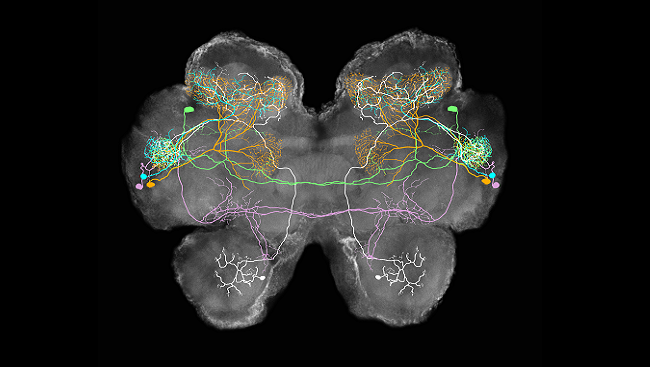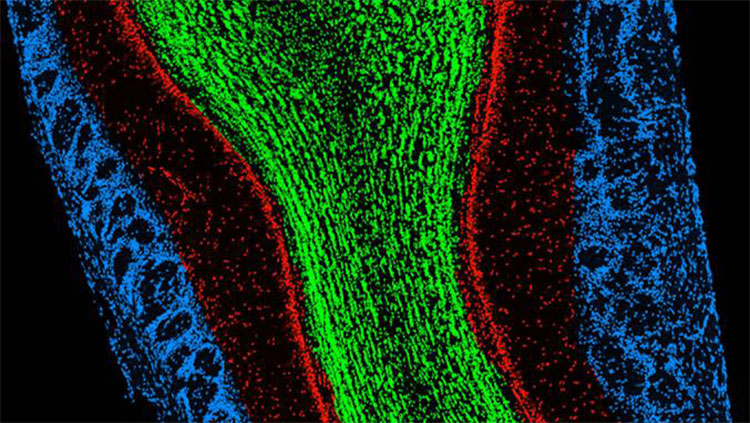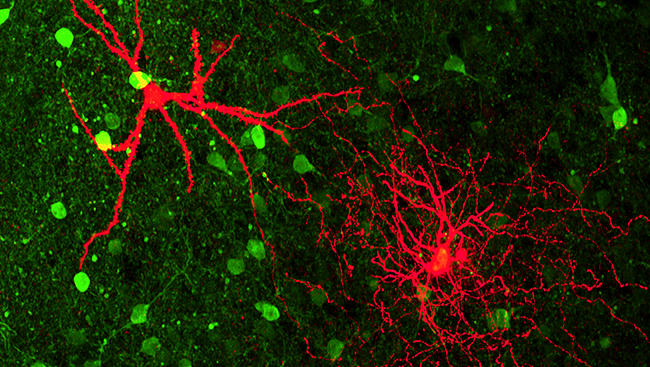
How does the brain track smells? Scientists use the olfactory system in insects to study how the brain responds to and processes different odors.
While locusts use their antennae to sense odors and humans obviously don’t, the smell-processing systems of these particular insects are useful models for research.
In the locust, nerve cells in the antennae send information to two olfactory information-processing centers. One is an insect brain structure called the mushroom body, which is known to control olfactory learning.
Researchers at the National Institute of Child Health and Human Development recently reported findings on another area, the lateral horn. The group found evidence that neurons in the lateral horn may be involved in odor intensity and integration, according to their study published in The Journal of Neuroscience.
The above image shows a collage of four types of lateral horn neurons (color) and an olfactory projection neuron (white) superimposed on the brain of a locust.
Also In Smell
Trending
Popular articles on BrainFacts.org
















